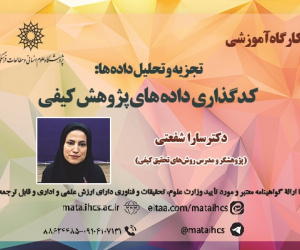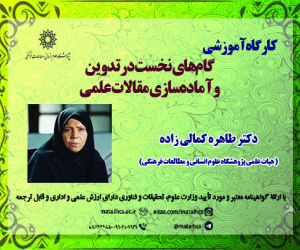نقش توحید ربوبی در برنامه ریزی راهبردی پیامبران اولواالعزم از منظر قرآن کریم (مقاله علمی وزارت علوم)
درجه علمی: نشریه علمی (وزارت علوم)
آرشیو
چکیده
خداوند، بر اساس ربوبیت خود، پیامبران را ارسال و قوانین را از طریق آن ها نازل کرده است. پیامبران اولواالعزم، حضرت نوح، ابراهیم، موسی، عیسی، و محمد (ع)، برنامه ریزی راهبردی متأثر از توحید ربوبی را بر اساس سه محور شناخت وضع موجود، ترسیم وضع مطلوب، و راهبردهای نیل به وضع مطلوب اجرا کرده اند. مقاله حاضر با بهره گیری از روش میان رشته ای، مراحل بالا را تجزیه و تحلیل کرده است. یافته های تحقیق نشان می دهد که پیامبران اولواالعزم (ع) برای نیل به وضع مطلوب، اقدام به طرح و ارائه راهبردهای گوناگونی همچون ابلاغ صریح مأموریت، حفظ سرمایه انسانی، استقامت و اتکال به خدا، پیوند دادن بین امور معنوی و مادی، بیان نقاط قوت سازمان خود، بسترسازی تداوم چشم انداز توحیدی در قرون آینده، انتخاب جانشین و استمرار سازمان، تشکیل حکومت، و تمدن سازی داشته اند. برنامه ریزی راهبردی پیامبران اولواالعزم (ع) در قضایایی همچون توجه به تمام نیازهای کارگزاران، اهمیت دادن به کار تیمی، پشتیبانی از سرمایه انسانی، توجه به عوامل معنوی، نهادینه سازی باورهای سازمان برای رقبا، و نهادینه سازی فاکتورهای معنوی در سازمان، نسبت به برنامه ریزی راهبردی دانش مدیریتی، از امتیازات انسانی، سازمانی، و محیطی برخوردار است.Role of Tawḥīd al-Rubūbiyyah in the Strategic Planning of the Ulū al-ʿAzm Prophets from the Perspective of the Qurʾān
Based on His Rubūbiyyah, God sent prophets and revealed legislations through them. The Ulū al-ʿAzm prophets (Arabic: أولو العَزم, literally: the determined or steadfast)—namely, Prophet Nūḥ (Noah), Ibrāhīm (Abraham), Mūsā (Moses), ʿĪsā (Jesus), and Muḥammad (peace be upon them)—implemented strategic planning influenced by Tawḥīd al-Rubūbiyyah (Oneness of Lordship or Divinity). This planning was structured around three key axes: understanding the current situation, drawing the desired situation, and strategies to achieve the desired situation. This study utilizes an interdisciplinary approach to analyze these stages. The findings reveal that the Ulū al-ʿAzm prophets (peace be upon them) adopted various strategies to achieve the desired state. These strategies include communicating their mission, preserving human capital, demonstrating steadfastness and reliance on God (Tawakkul), linking spiritual and material affairs, highlighting the strengths of their organizational framework, laying the groundwork for the continuity of the Divinity vision in future generations, selecting successors and ensuring organizational continuity, establishing governance, and building civilizations. The strategic planning of the Ulū al-ʿAzm prophets (peace be upon them) demonstrates distinct advantages over contemporary managerial strategic planning in areas such as addressing the comprehensive needs of agents, emphasizing teamwork, supporting human capital, integrating spiritual factors, institutionalizing organizational beliefs for competitors, and embedding spiritual elements within the organization. These advantages are evident in human, organizational, and environmental dimensions.









